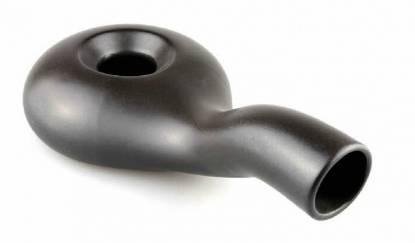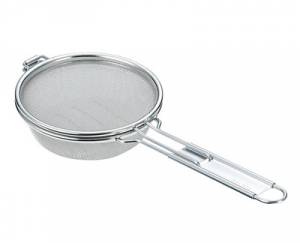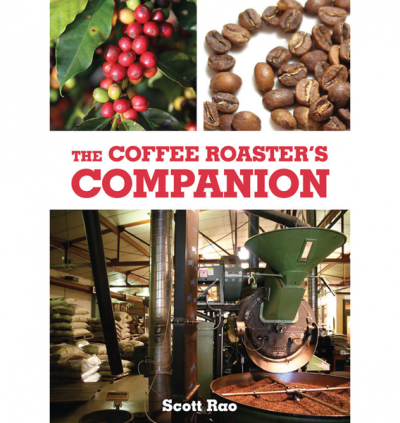Home » Blog » [Book Review] The Coffee Roaster's Companion by Scott Rao
[Book Review] The Coffee Roaster's Companion by Scott Rao
Coffee Roasting
I have no experiences of using proper coffee roasting machines, like the drum or the fluid-bed ones described in the book. All my apprehension of coffee roasting was obtained through various hand-held tools, such as the ceramic pot and the strainer-like roaster shown in the following figures.


After days of trial and error, I abandoned the ceramic pot and settled on the 'strainer'. The reason was that the 'thermo-inertia' of the ceramic pot was so big that precise adjustment of temperature was virtually impossible. The only thing you can do is to throw (charge) the beans in and hope for the best. On the contrary, the temperature of the strainer was super sensitive to the distance from the heat source. This property made it an ideal tool for precise temperature control. I installed three K-type thermocouples to it so that I could measure the temperature and save the data. For almost two years, using this semi-automatic roasting tool, I have roasted kilos of (the maximum roasting capacity is around 70 grams) Kenyan, Colombian, Guatemalan, and Ethiopian coffee beans, covering both wet and natural processed ones.
Apart from the data saved by my roasting rig, I’ve also gained some understanding in roasting. For example, open the ventilation to avoid smoky flavour; natural processed beans should be roasted more gently to avoid burnt tips (called tipping); the actual temperature displayed is not that important, as compared to the rate of rise of the temperature. It was in this circumstance that I came across this book, and from the first glance, resonance echoed in my mind and I just couldn’t stop reading it word by word.
The Book
 As the title suggests, it is a roaster’s COMPANION, or a reference book for anything in coffee roasting. The writing style as a result is very concise with simple yet profound analysis and abundant trustworthy references. As a consultant and trainer in coffee industry for over 20 years, the author Scott Rao definitely has solid foundations in every aspect of coffee, especially in roasting and preparation. This book is the essence of the author’s experiences in roasting.
As the title suggests, it is a roaster’s COMPANION, or a reference book for anything in coffee roasting. The writing style as a result is very concise with simple yet profound analysis and abundant trustworthy references. As a consultant and trainer in coffee industry for over 20 years, the author Scott Rao definitely has solid foundations in every aspect of coffee, especially in roasting and preparation. This book is the essence of the author’s experiences in roasting.
The author does not recommend the readers to cherry pick the book, delving into the chapters of coffee roasting directly. I do not recommend this practice either, since the book itself is a coherent whole, like a film, with roasting being its climax, but all other chapters paving the paths and building the foundations. By simply following the guidelines, you might get perfectly roasted coffee beans, congratulations then. But if you do not, in order to find out why, you need the previous chapters, which describe every contributing factors to the roasting quality and why. Through analysis of the roasting process (possibly storage condition of the green beans as well), not only will you work out a way to improve the roasting quality, you may well discover something exciting using critical thinking.
The structure of the book is unusual yet perfect as a reference, with numerous SHORT chapters, each dealing with a specific topic. Sentences within each chapter are densely packed with information, like shots of espresso, and are worth careful reading and reflecting. The first few chapters deal with green coffee, including its growing environment, the chemistry, processing methods and storage, since tiny variations in these procedures may well affect the roasting of the coffee beans.
The roasting chapters follow afterwards. Instead of giving a guideline, the author first lays out the fundamental knowledge of roasting, such as the physical changes in the colour, sound, bean size, etc., and the chemical reactions, including the break-down of sucrose and the Maillard reactions. The design of roasting machines is also covered. The roasting progression is then accurately described using various indices, including the temperature gradient, the rate of rise, etc. With all these necessary background knowledge, the author concludes three golden principles of roasting.
Various post-roasting topics are also discussed, such as roasting quality evaluation, roasting consistency, storage of roasted coffee beans, cupping, etc.
Excerpts from the book
Each sentence in the book is worth read over and over again. Only the three “commandments” of roasting are listed here.
“I. Thou Shalt Apply Adequate Energy at the Beginning of a Roast”
“II. The Bean Temperature Progression Shalt Always Decelerate”
“III. First Crack Shall Begin at 75% to 80% of Total Roast Time”